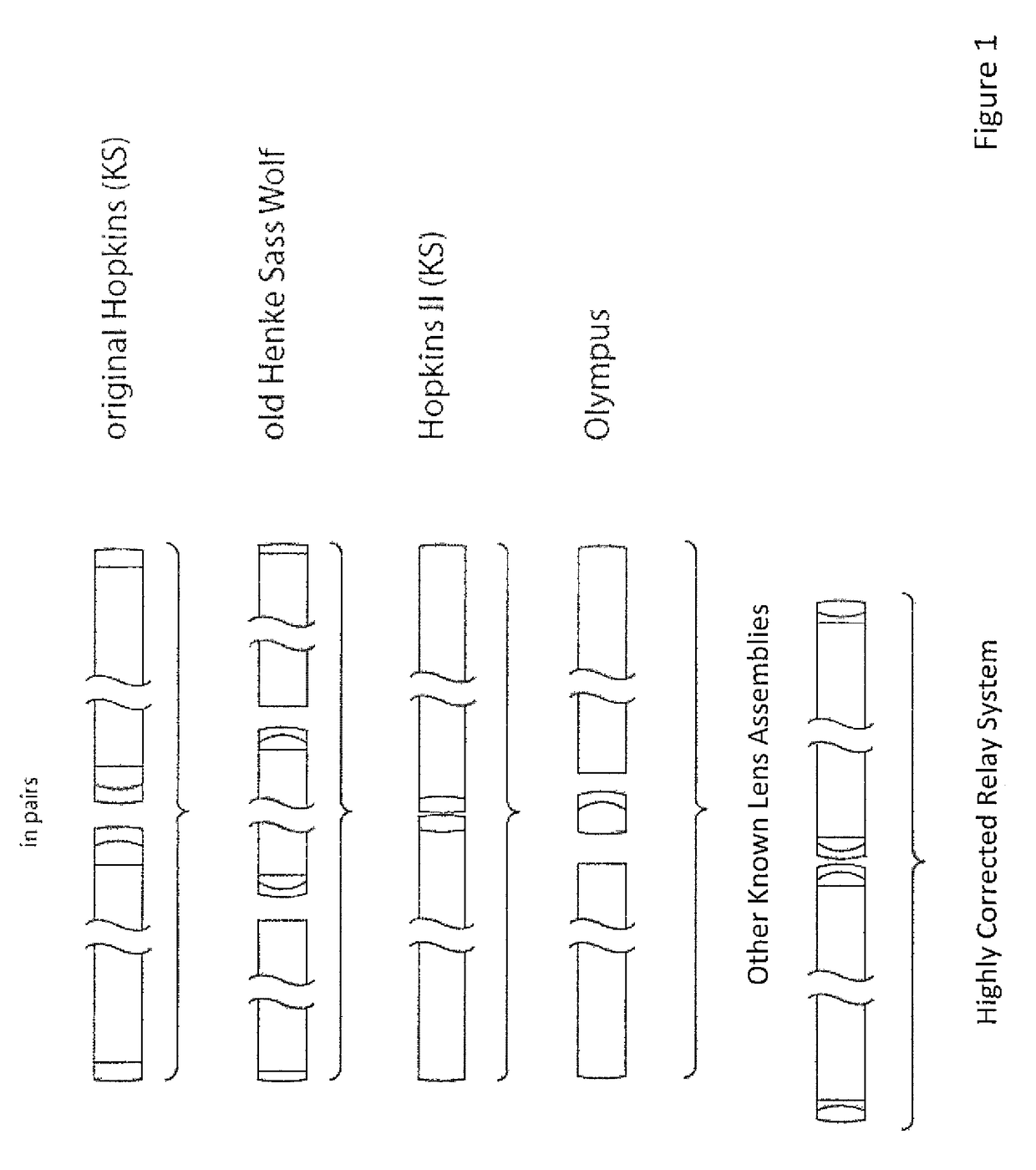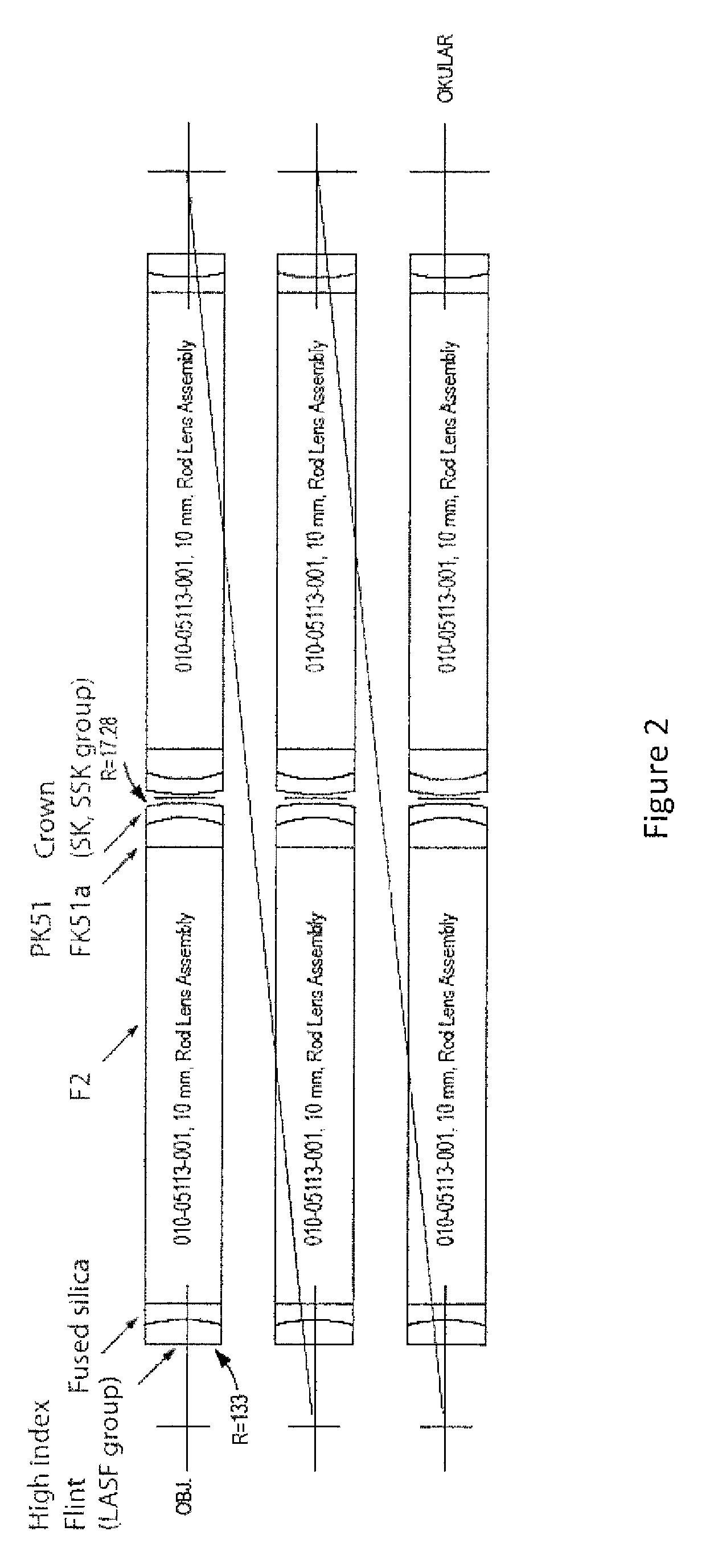Highly corrected relay system
a relay system and high-relay technology, applied in the field of high-relay system, can solve the problems of cumbersome visible waveband displacement error, troublesome, and too large for the physician's expectation of high resolution, and achieve the effect of minimizing secondary spectrum and chromatic aberration
- Summary
- Abstract
- Description
- Claims
- Application Information
AI Technical Summary
Benefits of technology
Problems solved by technology
Method used
Image
Examples
Embodiment Construction
[0020]According to one aspect of the invention, a rod lens assembly for endoscopy and the like is provided. The rod lens assembly comprises a plurality of bonded lenses selected to provide color correction from the blue region of the spectrum, corresponding to 400 nm at the lower limit, to the near infrared, corresponding to 900 nm at the upper limit, a minimum of Seidel aberrations left uncorrected, and correcting over a wide waveband range to allow co-located visible and near infrared images to be resolved on a single detector or, in the alternative, on multiplexed detector systems.
[0021]Another aspect of the invention provides a rod lens assembly for endoscopy containing one rod element per assembly in plano / plano form, and each assembly used in pairs of assemblies to re-image the product of the objective. The rod member is chosen to have a high index of refraction above n=1.60 of a flint material. Solely by way of example, F2HT glass can be used because of good blue light transm...
PUM
 Login to View More
Login to View More Abstract
Description
Claims
Application Information
 Login to View More
Login to View More - R&D
- Intellectual Property
- Life Sciences
- Materials
- Tech Scout
- Unparalleled Data Quality
- Higher Quality Content
- 60% Fewer Hallucinations
Browse by: Latest US Patents, China's latest patents, Technical Efficacy Thesaurus, Application Domain, Technology Topic, Popular Technical Reports.
© 2025 PatSnap. All rights reserved.Legal|Privacy policy|Modern Slavery Act Transparency Statement|Sitemap|About US| Contact US: help@patsnap.com



